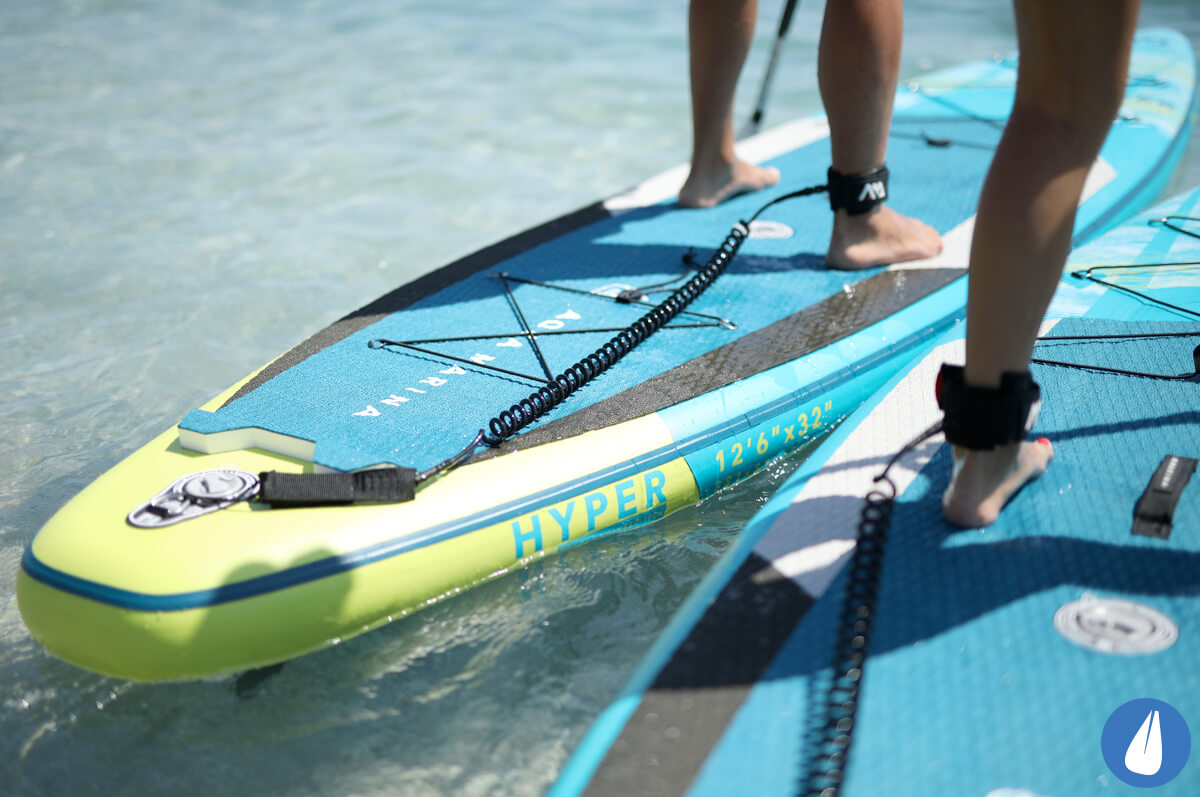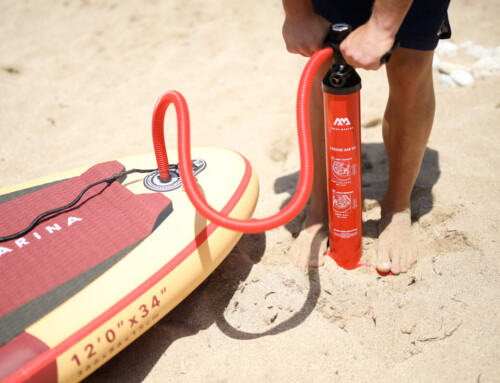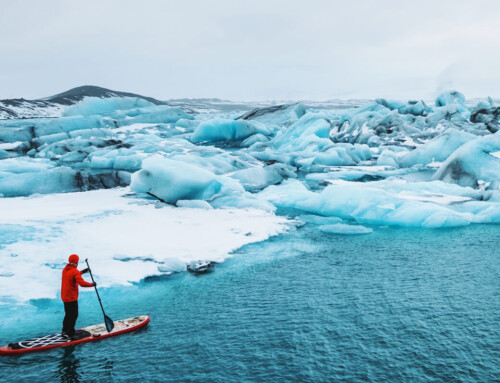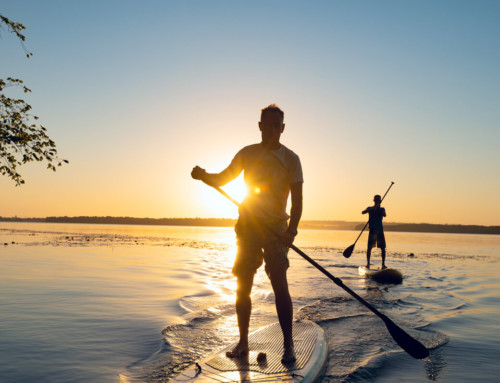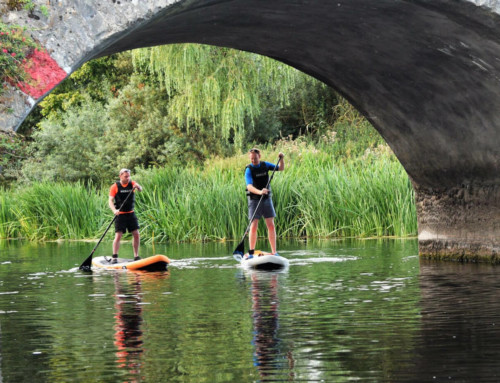Inflatable stand up paddle boards (iSUPs) are making the Irish coastline, lakes, rivers and canals in Ireland our new favorite places to spend time. Getting out for a paddle on the water is great for both our mental and physical health any time of year. Let’s take care and SUP safely with a few simple but important guidelines.
1. P.L.O.T. before you SUP
- P stands for PFD or ‘Personal Flotation Device’. Always wear wear a PFD like Restube buoyancy aid when on water. There are different types of personal flotation devices so choose one that’s best suited to your skill level and confidence in water. Here’s a great guide from Water Safety Ireland on choosing the right PFD and how to protect yourself in water.
- L is for leash and there are different types. Coiled leashes are great for still or flat water. Straight leashes are perfect for sea and catching a few waves. Always connect yourself to your paddle board with a leash.
- O stands for on/off shore wind. Consider wind direction before you set off. The direction of the wind can produce awesome and challenging paddling conditions.
- Off shore – wind blowing from land out to sea
- On shore – wind blowing from sea onto the land
- Cross shore – wind blowing parallel to land, across the beach
- T is for telephone but who calls them telephones nowadays? Always carry a fully charged mobile telephone in a waterproof case or dry bag. If you get into trouble call 112 or 999 in Ireland and ask for the coastguard.
2. Two’s company
SUP time is quiet time for some people and that’s fine. SUPing with friends is just as enjoyable and adds an extra layer of safety to the trip. There’s safety in numbers. Always let someone shore-side know you’ve gone out, what direction and an ETA on when you’ll be back. This way, someone else can raise the alarm if you can not.
3. Check the weather forecast and dress for it
The Irish forecast isn’t always right but it gets more accurate closer to day & time you are planning to paddle, so keep an eye on it. Nowadays free apps offer weather, wind and tide forecasts. Download a couple of these apps and monitor your SUPing destination and route. There’s some useful app resources linked at the bottom of this post.
Consider the time of year and dress up/down for the temperature. Wear a UV protective layer and apply sun cream when necessary. We wrote more about paddling in colder conditions in our ‘A paddle board is for life, not just for summer‘ post.
4. Knowledge is power
If you are unfamiliar with the area then talk to the locals. People who grew up or live near a river, lake or coastline will likely know the characteristics and geography of the area. Local knowledge is power, don’t be shy – ask plenty of questions. Chances are they have paddled, surfed, sailed or kayaked the area themselves and will have great tips and advice.
5. Be cool… as a cucumber
Don’t panic if you fall into water or get into difficulty. Easier said than done we know, but just breathe and remain calm. Think about what you need to do depending on the situation. Anticipate the unexpected before your next paddle… “What would I do if <insert your scenario here>“?.
A few “What if” scenarios:
What would I do if I fell off my paddle board?
You should be wearing a PFD and a leash so you’ll float. Just pull your board toward you and get back on. Collect your paddle quickly because they don’t float indefinitely. Practice falling off and getting back on your board in a safe environment.
What would I do if I paddled over rocks in shallow water?
If your SUP board is going to get stuck, damaged or punctured on a jagged edge, there’s a couple of things you can try.
- Using your paddle in shallow water, push yourself backward or in another direction steering clear of sharp objects and obstructions.
- If approaching head on, shift your weight to the rear of the board. This raises the nose and gives you time to slow down/reverse.
- Safely roll off the board to reduce it’s weight before hitting an obstruction. In shallow water, carry the board to a safe spot and get back on.
What would I do if I lost my fin?
Lower your center of gravity by kneeling down then paddle back to shore. Your board will still float but the experience won’t be as stable as usual. Go back to land, attach a spare fin and off you go again.
What would I do if the wind pushed me out too far?
- Don’t panic… speaking from experience here!
- Kneel down so as not to act like a human sail.
- Line yourself up with a safe direct route to shore and paddle at a steady pace. It’s very important to manage your pace to conserve energy when the wind is strong. A steady and consistent paddle stroke in high winds will help prevent drifting further out.
- As soon as there’s a break in the wind, paddle hard and fast toward shore.
- Rinse and repeat until you get out of danger.
If you get too tired or pushed out too far, call 112 or 999, ask for the coastguard and give them your location.
6. Have fun
Stand up paddling is as safe as any other water based activity if you have your wits about you. Enjoy, take care of yourself and others in water. Remember, if you don’t fall in from time to time, then you’re doing it wrong ;-D
Useful Resources
- met.ie
- windy.app
- tidesnear.me
- tideschart.com
- surf-reports.com/Ireland
- surfline.com (formally magicseaweed.com)

